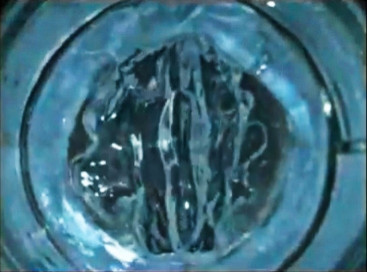Adele Throat Surgeon Developing Artificial Vocal Cord Gel To Give Voice To The Voiceless

When a vocal cord polyp threatened to silence Adele in 2011, she turned to Steven Zeitels.
Zeitels, a Harvard Medical School professor and director of the Center for Laryngeal Surgery and Voice Rehabilitation at Massachusetts General Hospital, has been trusted with the meal tickets of hundreds of singers, teachers, actors and other people that rely on their voices to make a living. In the world of throat surgeons, he's a bit of a rock star himself.
When he’s not operating on the likes of Adele, Julie Andrews or Aerosmith frontman Stephen Tyler, Zeitels is inventing new devices to aid surgeons and patients. Zeitels is also working with MIT bioengineer Robert Langer to find, as he put it to the New Yorker, “the Holy Grail” of voice restoration -- synthetic material that could be used to help give a voice to those with damaged vocal cords.
One of the biggest problems that arises from voice overuse is scar tissue, which is stiffer than normal tissue and leaves a person with a hoarser, breathier voice. To counter this loss of pliability, Zeitels and Langer are working on a polymer gel that vibrates much like a human vocal cord. You can see it at work in this video here:
While other approaches have focused on developing drugs to soften or dissolve the scar tissue causing the voice problem, Langer and Zeitels’ team decided to bypass the issue.
“What we did differently is we looked at this as a mechanical problem that we need to solve. We said, ‘Let’s not look at the scar itself as a problem; let’s think of how we can improve the voice despite the presence of the scar tissue,’” Sandeep Karajanagi, a former MIT researcher that worked in Langer’s lab, told the MIT news office in 2011.
In an interview with the Proceedings of the National Academy of Sciences, Zeitels and Langer said there would be different formulations of the gel based on the patient’s needs. A singer’s vocal cords are under a much different kind of stress than a teacher's.
“We wanted tunability to cater it to patients’ needs, as well as the practicality of how many injections might you want to do in a specific period of time,” Zeitels told the PNAS podcast.
Zeitels and his colleagues tested the vocal cord gel in dogs and found that the gel doesn’t damage the vocal cords, a key first step in establishing that the gel is safe to use in living organisms. The team had hoped to run a small trial of the gel in people in 2012, but, as of now, the trial hasn’t yet gotten off the ground.
“The biggest issue is raising funding,” Langer said in an email.
If the gel does eventually make it through clinical trials and into the marketplace, singers wouldn’t be the only beneficiaries. Many people in the U.S. have vocal cord damage from other causes, such as cancer or scarring from being intubated during surgery. (You could also imagine some singers or transgender men and women opting for installing the gel as an elective procedure, to sweeten or alter their voices as they pleased.)
“This would be so valuable to society, because every time a person loses their voice, say, a teacher or a politician, all of their contributions get lost to society, because they can’t communicate their ideas,” Zeitels told MIT’s news office.
© Copyright IBTimes 2024. All rights reserved.





















